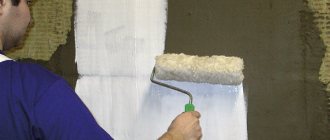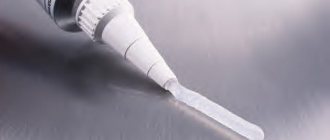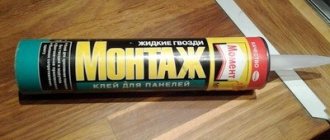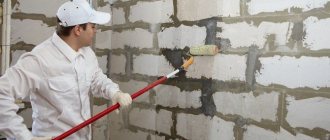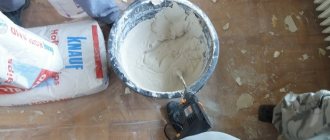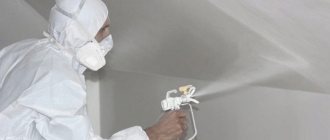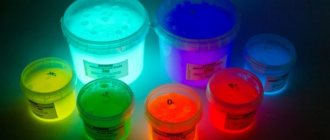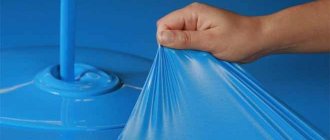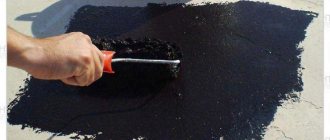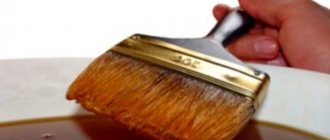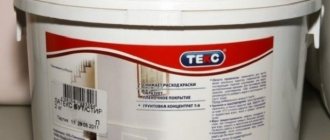Professionals know how capricious and high-maintenance wood is. This natural material needs high-quality protection. Impregnation and antiseptics are usually used. And to change the color of the material, they resort to the use of paints. The main requirement for high-quality application of paint and varnish material is careful preparation of the wood. A high level of adhesion, evenness of the surface and the absence of visible defects are important. The peculiarity of wood is porosity, so paint consumption increases.
A wood primer for painting will help improve adhesion and reduce paint consumption. Experienced professionals know how important it is. Although there is an opinion that this stage of tree preparation is optional. Where is the truth, is it necessary to prime wooden walls before painting them? If so, what primer should I choose and how should I apply it correctly?
What functions does the primer perform?
To determine whether a primer is needed before painting your walls, you need to become familiar with the functions it performs and also know some facts, such as:
- What material is the wall made of? Is it just wood, or are there metal and concrete surfaces?
- What condition is the coating being treated in?
- What type of finishing will be done.
- What paint and varnish material is used.
Let us note right away that priming a wooden surface is required even if no flaws are visible on it. And if this is repeated decorative treatment, then a number of other preparatory work is also carried out.
The peculiarity of primers for wood is that they ensure adhesion of the finishing paint and varnish material with the coating. Adhesion is the “sticking together” of materials. If adhesion is low, the paint will not adhere tightly and will begin to peel off after a year or two. The appearance after the renovation just done will not be the best. The reason for this is temperature changes, mechanical effects on the surface, and the presence of resin in the structure of the wooden board. If you use a primer before painting the wood, the paint will not peel off.
In rooms with high levels of humidity, poor ventilation or improperly insulated walls, there is a high risk of mold and mildew. Penetrating primer contains special additives called fungicides. Thanks to them, biological microorganisms will not form on the surface. And to protect wood from rotting, a composition with antiseptic properties is selected.
Another positive property of the primer is cost savings. After all, it will take much less paint and varnish material to paint the surface. Consumption is reduced to 25%.
Types of primers
Based on their composition, they are classified into:
- Acrylic. Without exaggeration, they are considered universal. They have an emulsion structure and are diluted with water. They are used for processing not only wood and wood-based materials, but also concrete plaster and brickwork. Excellent as a base for acrylic paints. Penetrate deeply, absorb well and quickly. Odorless, non-toxic, do not cause respiratory irritation during use. Drying time is about 3 hours. Depending on the porosity of the wood, the acrylic primer is applied in one or several layers. The disadvantage is considered to be low moisture resistance and freezing at sub-zero temperatures, which is why it is used mainly for interior work.
- Alkyd. These types are well suited for application to wooden, metal surfaces, cardboard, plastic, and plaster. They are enamels that contain more solvent. Creates a durable waterproof film on the surface when applied in a single layer. Alkyd primer provides good adhesion, withstands low outdoor temperatures, and is wear-resistant, so it is recommended for external work. Can be used on previously painted surfaces. Drying time is about 12 hours. Disadvantages are shallow impregnation of the material and a pungent chemical smell, which takes a very long time to dissipate.
- Polyurethane. This type of composition is a mixture of epoxy resins and special solvents, is more expensive than others and is suitable for treating surfaces before applying varnish. Creates a perfectly smooth sheer or pigmented finish. Does not differ in depth of penetration and durable strengthening of surfaces, toxic. Polyurethane primers come in several types and are not practical for treating wood. They smell very strong and take a long time to dry. It takes about a day to completely dry the surface.
- Shellac. They are used to level and fix the natural color of wood, isolate places where resin leaks, and smooth out the pile. For these reasons, shellac is a good choice for coating fresh material and diluting soluble impregnating compounds.
- Drying oil. Produced on the basis of mineral or vegetable oils, used as a base for oil paints. It is well absorbed into hard, finely porous wood and protects surfaces from mold. To increase hydrophobic properties, wax is added to some oil compositions. With the help of drying oil, both external priming work on wood and the treatment of internal surfaces are carried out.
- Adhesive. To treat wooden surfaces inside work and storage rooms, garages, sheds, and inconspicuous places in the house, a fairly practical composition based on PVA glue and water is used. It’s easy to prepare: 1 part of the glue is diluted with 2 parts of water, the suspension is thoroughly mixed, and a little chalk is added.
| Manufacturer, brand | Type | Volume, l | Price, rub |
| Belinka Base | alkyd | 1 | 605 |
| V33 | antiseptic | 2,5 | 1 219 |
| Tikkurila Otex AP | alkyd, adhesive | 0,9 | 850 |
| Grida | acrylic | 10 | 170 |
| Teknos Futura | primer-paint | 9 | 6 336,60 |
Not only price, quality, composition, but also color are decisive. The primer for painting with enamels and oil paints can be matte, but varnishing requires a completely transparent layer that emphasizes the natural pattern. Many colorless primers are used as an independent coating when finishing decorative parts of interior furnishings and furniture.
Benefits of using wood primer
Wood primers have properties that strengthen the wood surface, preventing damage and further providing more reliable adhesion to the paint layer. Due to priming, the finishing coating will last for a long time without peeling off. It is worth noting that the price of wood primer is significantly lower compared to the cost of paint, so saving on priming in most cases is hardly inappropriate. Some craftsmen mistakenly believe that a primer for wood can be replaced with a layer of paint with an added solvent, but this is not the case - as a result of such treatment after painting, you can get a finish of much worse quality, and besides, due to the excellent absorbency of wood, a significant consumption of material will be required. The advantages of using a primer for wood include: its ability to penetrate deep into the layers of the material being processed, impregnating and strengthening them. In this way, you can give greater density to old drying wood.
Wood primer for exterior use penetrates deep into the wood, filling pores and small cracks, and effectively prevents its destruction under the influence of high humidity; as a result of priming, the absorbency of wood materials decreases, since natural wood in its structure resembles a large-pored sponge that actively absorbs the initial layer of dye. It should be noted that wood primer has a significantly lower cost compared to various types of paint. Thus, with the help of preliminary priming, paint consumption can be significantly reduced; the antiseptic components of the composition have a disinfecting effect - with the help of such priming it is easy to prevent or eliminate the appearance of mold and subsequent rotting of wood, as well as protect it from damage by insect pests. The use of this type of protection is especially important if the object being painted is located outdoors.
It is worth noting that using a primer for wood for painting, you can create a separating and protective layer for previously painted wood, which will be required if the initial and subsequent painting differ in color. In addition, natural wood contains a natural dye (tannin), which can appear as unsightly stains through a layer of water-soluble paint. By using a wood primer before painting, you can protect yourself from such phenomena during further finishing. To obtain a high-quality painting result, you will need to pre-treat the wood for painting with an appropriate composition for external or internal work. The following wooden structures are in greatest need of priming for painting: those located outdoors - fences, window frames, doors, roof elements exposed to adverse atmospheric influences and temperature changes; placed in rooms characterized by high humidity, as well as structures in contact with external walls; where there is an increased likelihood of insect damage.
Preparatory work
Before applying the primer, the wood needs to be prepared: remove the old finishing material, if any, clean it from dust and dirt.
Important: the habit of painting over paint has remained since Soviet times. Yes, in principle this can be done, but you need to take into account that the wear resistance of the new coating layer will be greatly reduced. This is especially critical for floors, outdoor benches and other wooden structures that are subject to intense mechanical stress. Therefore, it is better to remove old layers of paint or varnish before priming the wood before painting.
All cracks and defects are removed using wood putty. The surface is sanded for varnish.
What is the difference between primer and paint?
There is no need to confuse these concepts. Primer - a composition to improve adhesion and reduce consumption. The paint adheres much better with it. But paint allows you to protect the wood and give it a certain color.
It turns out that the primer is the base layer before applying any decorative material. And paint is a self-sufficient decorative layer. However, many people ask if it is possible to apply primer over paint. Yes, under certain conditions. For example, if the paint layer adheres well to the surface and is not too old. But not all mixtures can be applied over paint, because it creates a smooth surface. An adhesive and non-contact primer is used.
There is such a thing as primer paint. This is a substance that has both a coloring pigment and creates a protective film on the surface. However, as experts recommend, they should not be used. Firstly, the color range is too small, and secondly, the coloring matter in them is of low quality. The product price is low. It is better to prime the wooden surface separately and then apply paint.
Tools and materials
At this stage, you need to determine what primer will be used to process the wood.
The list of tools is as follows:
- A brush or roller is the main tool for applying primer to the surface. It is convenient to quickly and efficiently process large and even walls with a roller, and hard-to-reach places with a brush;
- roller tray to control the amount of composition;
- a broom or brush to remove dirt from the surface of the wood;
- personal protective equipment: glasses, gloves, work suit.
If the walls are affected by fungus or mold, you will additionally need to buy a product to remove them.
Priming process
Everything is simple here. Anyone can cope with this task. Products are always purchased along with instructions. There you can familiarize yourself with the conditions and methods of application. The most important thing is to prepare the surface of the wood.
The first step is to get rid of traces of paint, dust or stains. It is worth removing unnecessary screws and nails.
If the surface is not smooth enough, the material should be sanded with sandpaper or special tools. If water was used during cleaning, it must be dried.
Now you can take a brush or roller and start priming.
Main selection criteria
In order for the choice of primer to be correct, several criteria must be taken into account.
Work location
Before purchasing a primer, you need to know exactly whether the product is being purchased for interior or exterior work. Some compounds are designed specifically for outdoor use, while others are recommended for indoor use. A properly selected product is the key to a quality result.
Microclimate
There are primers on sale that are resistant to various external influences (dry and hot air, humidity, temperature changes). Be sure to consider these properties when choosing a product. The maximum hydrophobic effect allows the primer to be used in areas with high dampness.
Drying time
This parameter should be taken into account when choosing a processing agent. During the hot season, it is recommended to carry out the priming procedure in the morning or afternoon. Drying time is significantly reduced if you work outdoors. Alkyd primer dries especially quickly and must be applied in several layers.
Material for post-processing
Depending on what you will apply to the primed surface (varnish or paint), you should choose the type of composition. If you want to showcase the natural shade of natural wood, opt for transparent compounds in tandem with varnishes. A white primer will reveal the fullness and richness of the paint. The color looks much more expressive against a snow-white background.
Why prime wooden surfaces?
A primer for exterior woodwork is required, because it is from the street that natural factors most influence the material: rain, moisture, temperature changes. Various roofing elements, facade decoration, fences and enclosures must be protected from damage by priming and painting.
Tip: The main criterion when choosing a primer for exterior work is that the composition should create a waterproof coating.
Also, such treatment requires wooden structures that are located indoors, but are in contact with the facade walls. Indoors, you need to take care of wood products that are found in rooms with high humidity or not heated: bathrooms, loggias, balconies.
Expert advice
Don't skimp on primers. The appearance of the surface and resistance to various external and internal factors depend on their quality. If you're on a budget, it's better to spend less on enamel or varnish. Be sure to read the instructions for the composition, especially if you are using the primer for the first time and are working without the participation of a specialist. Purchase products from trusted retail outlets. If necessary, require appropriate certificates. If you buy a product remotely (for example, through a website), carefully read the description of the product and familiarize yourself with its composition.
What kind of primer mixture is needed?
Having visited the construction market, slightly confused by the variety of goods offered there, a non-professional sometimes succumbs to the persuasion of sellers who advertise their product as universal, and may make a mistake with the purchase. To prevent this from happening, you need to decide before going to the market why and for what purpose the primer will be purchased. Its composition largely depends on this.
The purposes of applying primer can be the following:
- smoothing out uneven surfaces before applying varnish;
- restoration of old parquet or wooden floors;
- the desire to emphasize the texture of wood, to brighten its pattern;
- increase the shade of panels or parquet;
- protect the product from the risk of darkening;
- increase the resistance of parquet to wear;
- protect wood from unfavorable environmental conditions, fungi, rot - this most often applies to wooden products for outdoor use: gazebos, terraces.
Wood Preparation Basics
The final result depends on the quality of the primer and surface preparation. Thoroughly clean the wood of dust particles and other contaminants. Sand the surface if necessary. You can prime on old paint if the enamel type and color match.
In this case, it is not at all necessary to completely remove the old paint. Otherwise, old particles are removed using a regular spatula. Use solvent if necessary. Sand the surface. If you are dealing with fresh wood, you should scrape and sand the surface. If the canvas has minor flaws, they are covered with acrylic putty.
